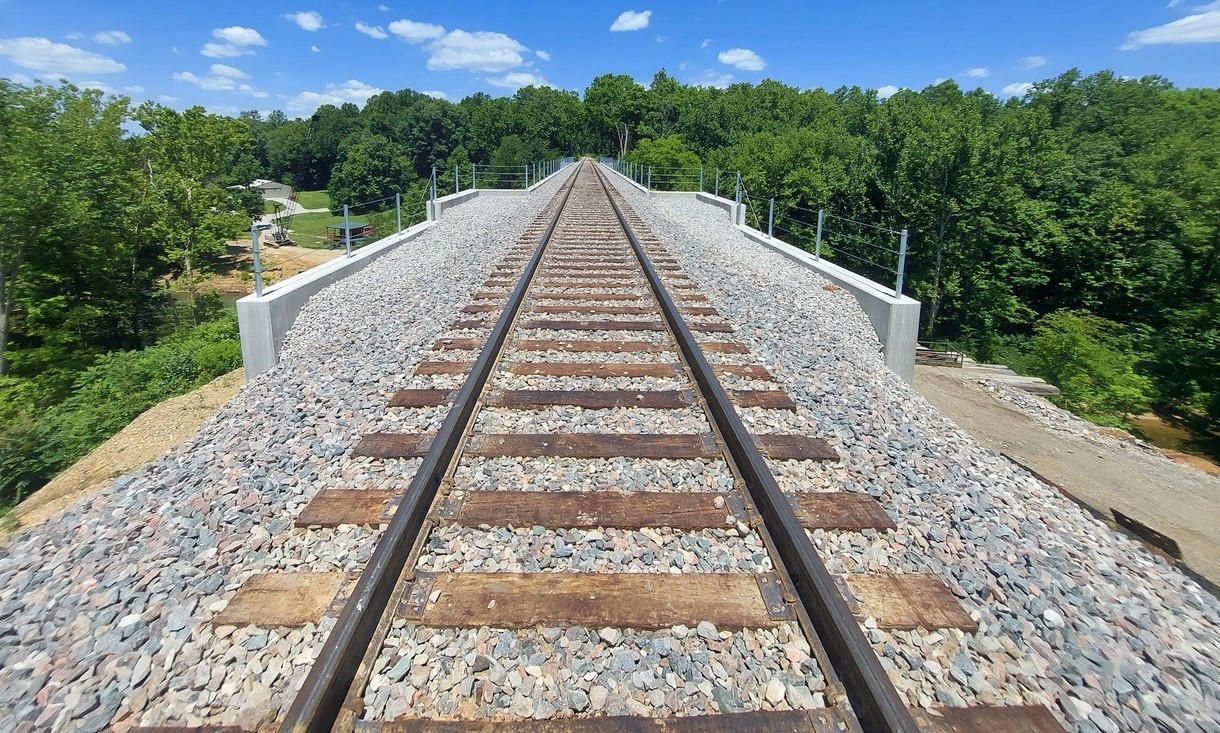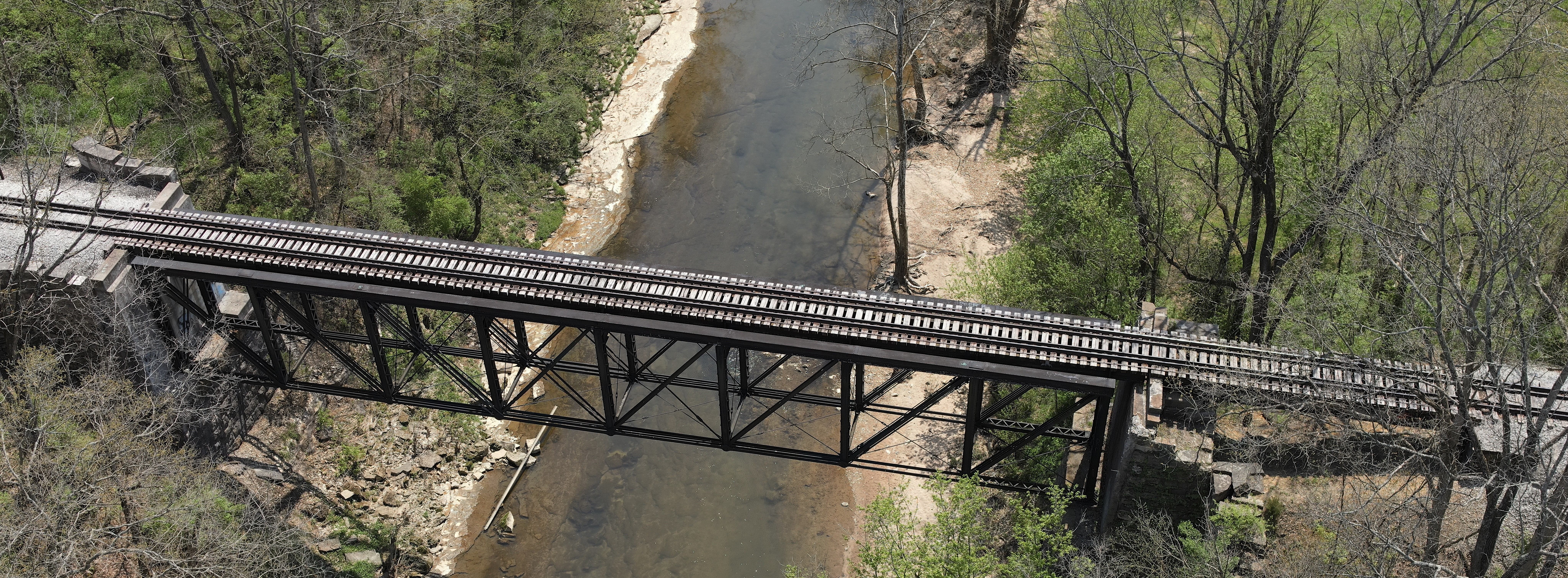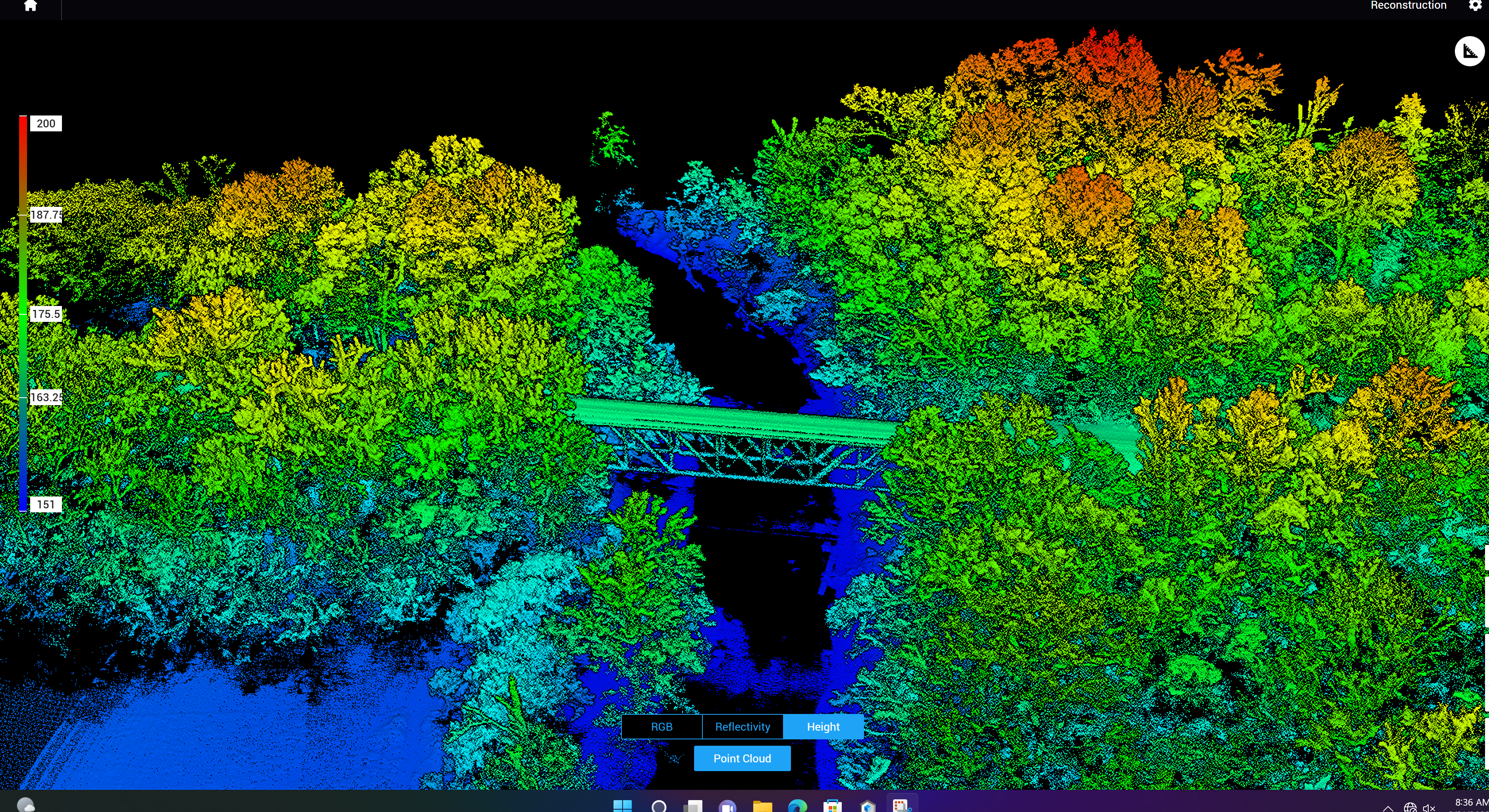August 2022
The present met the past in Jennings County this summer, as INDOT replaced a 115-year-old railroad bridge using cutting-edge aerial mapping techniques and modeling technology. The Graham Creek Railroad Bridge has been replaced by a sparkling new bridge that can handle standard-weight rail cars and boasts modern safety features. Here are some differences:
- The old bridge, built in the early 1900s, was an open-deck pin-truss steel structure, which fell out of favor by 1920 because of its construction technique; the 2022 bridge is made of new materials and includes modern safety features.
- The old bridge was built the year after the first Wright Brothers airplane flight; the new bridge was constructed with the assistance of visual images via unmanned aerial systems (UAS) technology flown by INDOT personnel.
- The old bridge was built just four years after the introduction of the first mass-market camera, the Kodak Brownie; UAS photos of the new bridge include images via LiDAR — which measures distance by illuminating a target with laser light — to generate a 3D point cloud, also called a digital twin.
- The steel structure of the existing bridge was cut up and removed from the site; the superstructure steel units of the new bridge were constructed nearby and lifted into place.
“This project shined a light on how INDOT and its partners use modern technology to build state-of-the-art infrastructure,” said Rail Programs Manager Venetta Keefe.
The bridge is owned by Madison Railroad and the City of Madison Port Authority. INDOT is the administrating agency for certain grants distributed to short-line railroads and port authorities for infrastructure improvements. INDOT contributed $884,000 in grants to defray the $6.4 million project, which consisted of a 280-foot bridge composed of four 70-foot steel girder spans.
Besides a modern superstructure that was lifted into place as part of an accelerated bridge construction contract, the new railroad bridge features concrete barriers topped by guardrail, both of which were nonexistent at the old structure. The bridge also includes more ballast to the sides of the railroad ties. These upgrades enable the bridge to carry 286,000-pound rail cars, the current standard operating railroad car weight.
But INDOT’s involvement didn’t end there. Our Multimodal Division’s Office of Aviation teamed with INDOT’s Land & Aerial Survey Office to make the project a success.
“This was a test mission to determine the feasibility of the value to short-line railroads and port authorities in INDOT developing a program that uses our UAS for pre- or post-project documentation on Industrial Rail Service Fund projects,” said Keefe.
To that end, Aviation Development Specialist James Kinder teamed with Land & Aerial Survey Office Aerial Geomatics Coordinator Adam French to provide aerial photos.
French is using UAS technology to collect aerial mapping and aerial survey data to take it beyond just drone photos. As part of an internal test of INDOT’s airborne equipment, French collected LiDAR data of the bridge and used it internally to generate a 3D point cloud, or digital twin, of the bridge. The 3D point cloud was used to document and measure components of the structure along with creating digital-terrain and bare-earth models. We vetted the data and its accuracy and limitations.
Madison Railroad General Manager Adam Robillard said: “We greatly appreciate INDOT’s unwavering commitment to the modernization of the rail transportation system in our state, the Madison Railroad, and the vision for economic growth in southern Indiana. Through this investment in our rail system, we were able to increase freight capacity on our rail line, eliminate safety issues with the existing bridge, and offer expanded services to our customers.”




